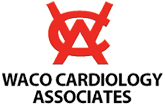Chest pain could be a symptom of a number of serious conditions. As chest pain can be due to very serious heart or lung conditions, it is generally considered a medical emergency.
While cardiologists may determine that chest pain is not cardiac related, this is often a diagnosis made after ruling out more serious causes of the pain. Thus, patients having chest pain are usually seen in emergency rooms or by cardiologists.
With severe chest pain, the first thing you may consider is heart attack. Certainly chest pain should not be ignored. But it has many possible causes. In fact, as much as a quarter of the U.S. population experiences chest pain that is not related to the heart. As there are many organs in the chest cavity, chest pain may also be caused by problems in your lungs, esophagus, stomach, gallbladder, muscles, ribs, spine or nerves, for example. Some of these conditions are serious and life threatening. Others are not. If you have unexplained chest pain, the only way to confirm its cause is to have a doctor evaluate you.
Chest pain that occurs predictably with exertion can be due to inadequate blood flow to the heart, usually caused by underlying plaque or atherosclerosis, called coronary artery disease when there are blockages in the arteries that carry blood to the heart. Chest pain caused by this is called angina. When an artery to the heart suddenly becomes completely blocked, it can cause a heart attack or myocardial infarction which often has severe chest pain as a prominent symptom.
Other Cardiovascular Causes of Chest Pain
There are cardiac causes of chest pain that are not due to blockages in the arteries to the heart. The heart has a lining or sac around it called the pericardium which can sometimes become inflamed, leading to pericarditis, which can cause chest pain that may worsen with a deep breath. Inflammation of the heart itself is called myocarditis and can mimic a heart attack as can “broken-heart” syndrome, known as stress cardiomyopathy or Takotsubo cardiomyopathy.
Arrhythmias, such as atrial fibrillation, can sometimes cause chest pain, usually if the heart rate is particularly fast. Mitral valve prolapse can also cause chest pain. The aorta is the main and largest artery in the body and takes blood from the heart. When it is enlarged it can cause chest pain if it is enlarging, rupturing or tearing (aortic dissection) and this is a very serious condition which sometimes can be difficult to diagnose.
Non-cardiac Causes of Chest Pain
Lung:
If blood clots from the veins of the legs break off and travel through the right side of the heart and into the lungs blocking arteries that go from the heart to the lungs, it is called a pulmonary embolism. This often causes chest pain and is a serious condition. Other lung conditions such as pneumonia, collapsed lung, fluid or blood around a lung, pleurisy, and lung cancer can also cause chest pain.
Gastrointestinal:
Acid that comes up from the stomach into the esophagus can cause pain or burning, called “heartburn.” It can be very difficult to distinguish between chest pain caused by heartburn versus the sensation of a heart attack. For this reason, it is better to be safe and have any chest pain checked out, even if you think it might just be caused by heart burn. Hiatal hernias, stomach irritation and gallbladder problems may also cause chest pain.
Chest wall or Musculoskeletal:
Inflammation of the cartilage that connects ribs to the breastbone, or costochondritis (Tietze’s syndrome) is a benign condition that is sometimes mistaken for heart disease. Trauma, bruises, or muscle strains in the chest wall or breast area can be mistaken for heart disease. Spinal or disc problems in the neck or thoracic spine can cause chest pain as can shingles (Herpes zoster) if it occurs along a nerve root affecting the chest area.
Psychological:
Anxiety or panic attacks can lead to chest pain and often patients believe they are having a heart attack although this should always be a diagnosis of exclusion.
Diagnosing Chest Pain
A careful history and physical exam often can lead a cardiologist to narrow down the possibilities of what the cause of chest pain is. Medical tests help confirm or rule out more serious causes of chest pain. These include an electrocardiogram; chest x-ray, nuclear medicine tests (including V/Q scans, cardiac PET scans and nuclear myocardial perfusion imaging), echocardiograms, blood tests; and cardiac stress tests. With more severe chest pain, especially if the patient is otherwise unstable or very ill looking, ruling in or out serious causes of chest pain such as heart attack, thoracic aortic dissection, pulmonary embolism, cardiac tamponade, tension pneumothorax or esophageal rupture is the most important first step.
Anti-coagulation
Anticoagulation is where a substance or medication is used to prevent the coagulation of blood. Clotting is a normal physiological function to help prevent excessive life-threatening bleeding after an injury. It is a process that depends on certain proteins that our bodies make that are part of the coagulation cascade. Sometimes the coagulation cascade creates a situation where blood clots can form when or where they normally should not which can lead to health problems. As the cardiovascular system depends on blood always freely flowing, blood clots can impair adequate blood flow or can travel to vital organs cutting off blood flow and thus oxygen delivery to the end organ (such as brain, heart, lung or kidney) or extremity (such as a leg or arm).
Anticoagulants are medications that reduce the odds of blood clots forming or, in simple terms, “thinning” the blood. This name is misleading as the blood is not truly “thinner” but just not as likely to clot or will take longer to clot. Sometimes a clot can form in the deeper veins of the legs which can cause pain, redness and swelling. If a DVT worsens, it can extend or break off and travel (embolus) through the heart and into the lungs causing serious problems. In atrial fibrillation, blood stagnates in the upper chambers of the heart where it can clot and then break off and travel from the heart to the brain and cause a stroke. Sometimes after very large heart attacks, some of the main pumping chamber of the heart doesn’t contract with each heart beat anymore and a blood clot forms because of stagnation of blood in that area. Likewise, these clots can also embolize up out of the heart and into the brain and cause a stroke. When patients receive surgical mechanical valve replacements, the non-biological surface of these valves can cause blood clots which can impair the function of the new valve or break off and cause a stroke.
Anticoagulants are used to find the safest balance between preventing blood clots without increasing the risk of bleeding too much. For patients who need blood thinning medications it is important to have a cardiologist who has adequate experience in using these medications. Most cardiologists have extensive experience with blood thinning medications.
Vitamin K antagonists are oral anticoagulants called the Coumadin’s of which warfarin is the most commonly used in the United States. It interferes with proteins manufactured by the liver that are vitamin K dependent. Blood tests that measure a “protime” of how long it takes for these proteins to clot helps determine if the dosage is enough to reduce the odds of clots but not so much to increase the risk of bleeding.
Heparin is an intravenous biological substance derived usually from pig or cow intestines that activates anti-thrombin III which prevents blood clots. In certain circumstances in can be injected under the skin a few times daily, but for more dangerous clotting situations, it has to be given as a continuous intravenous (IV) drip and blood tests are required to determine if it is dosed correctly. Both warfarin and heparin can be challenging to dose correctly. Heparin is often used in a hospital setting or when doctors know that the anticoagulant effect should only last a relatively short period of time.
Low-molecular weight heparins such as Lovenox or Fragmin have a more predictable anticoagulant effect that usually does not require any blood test monitoring and can be administered just once or twice a da

